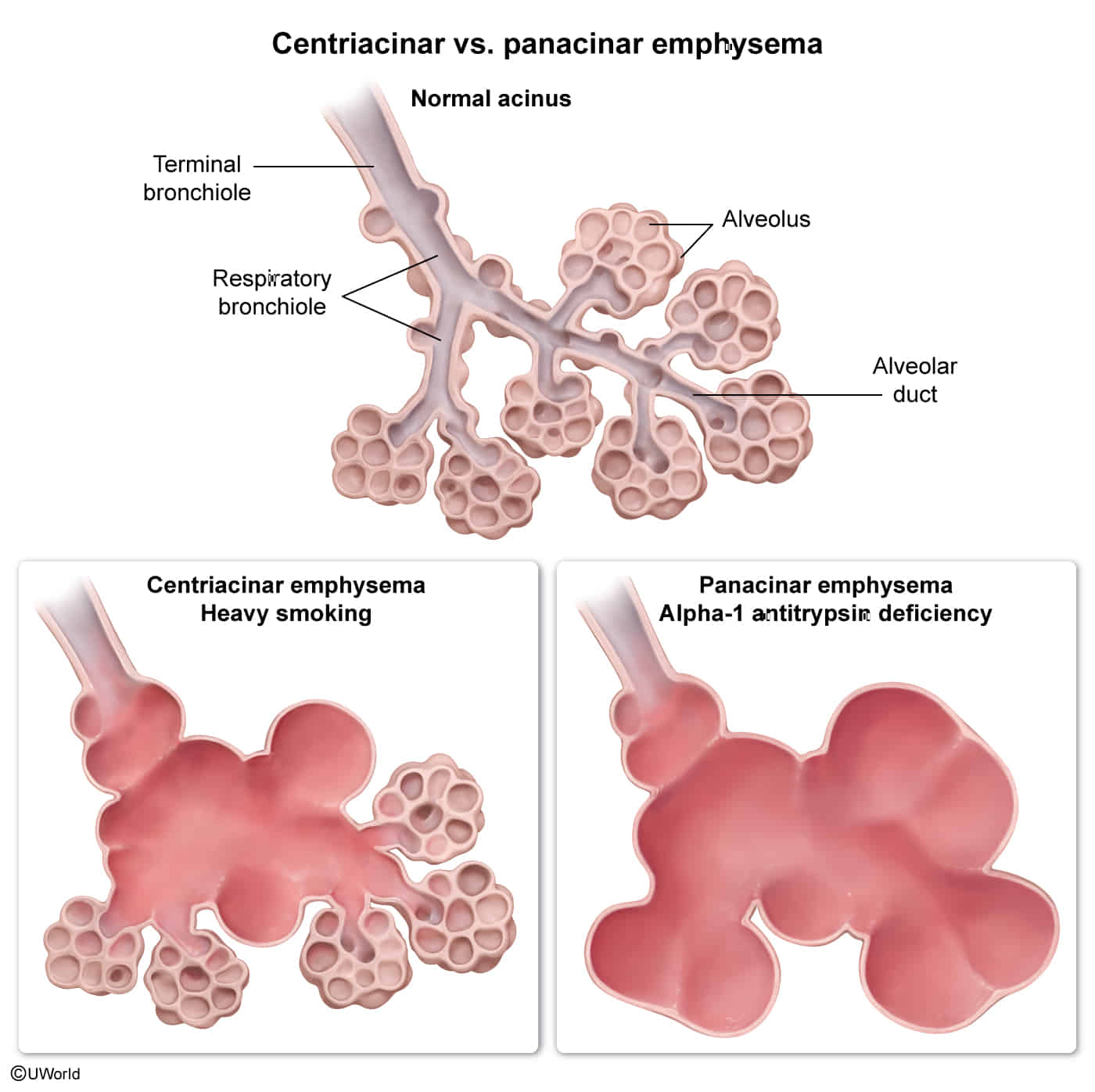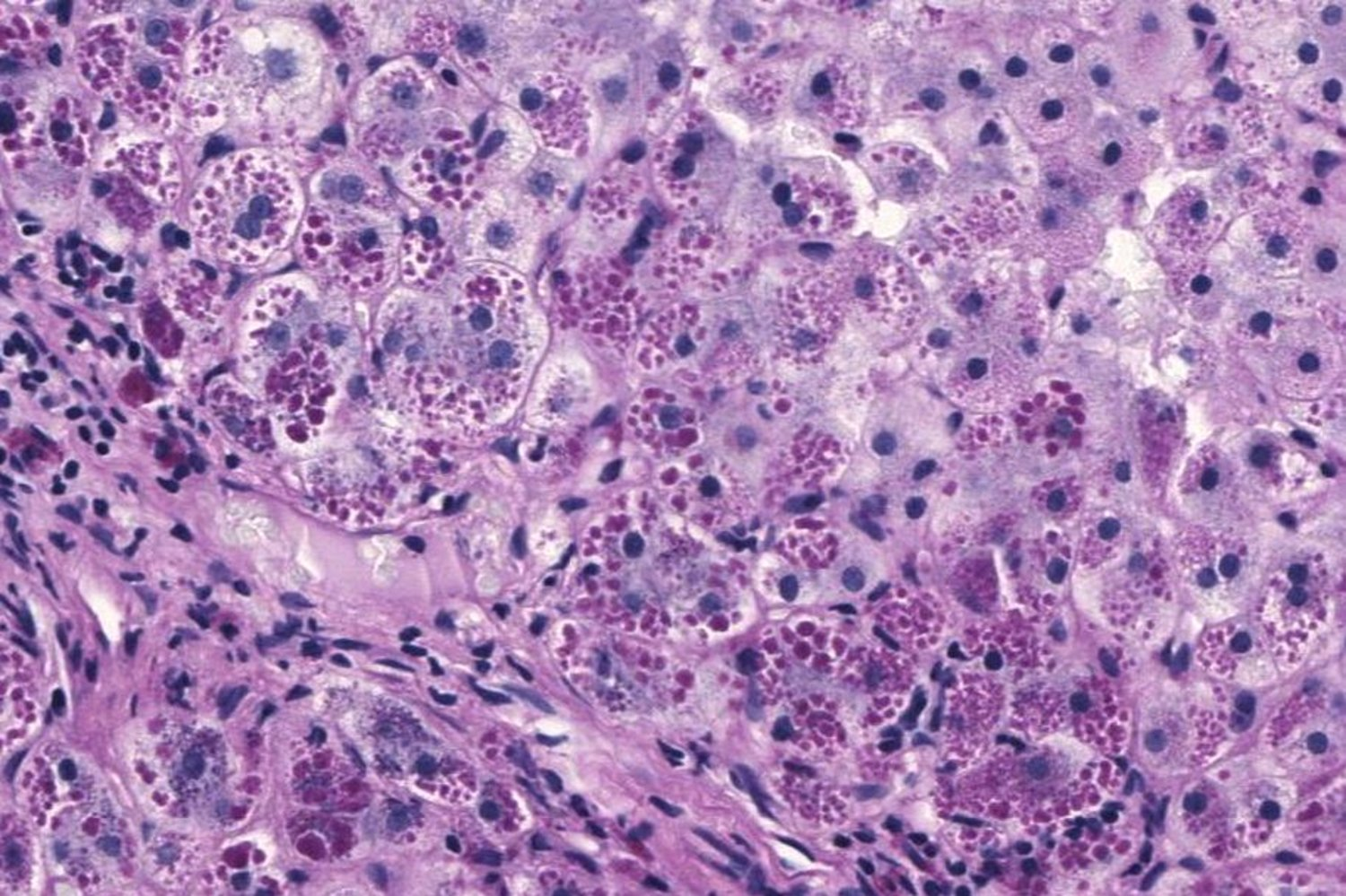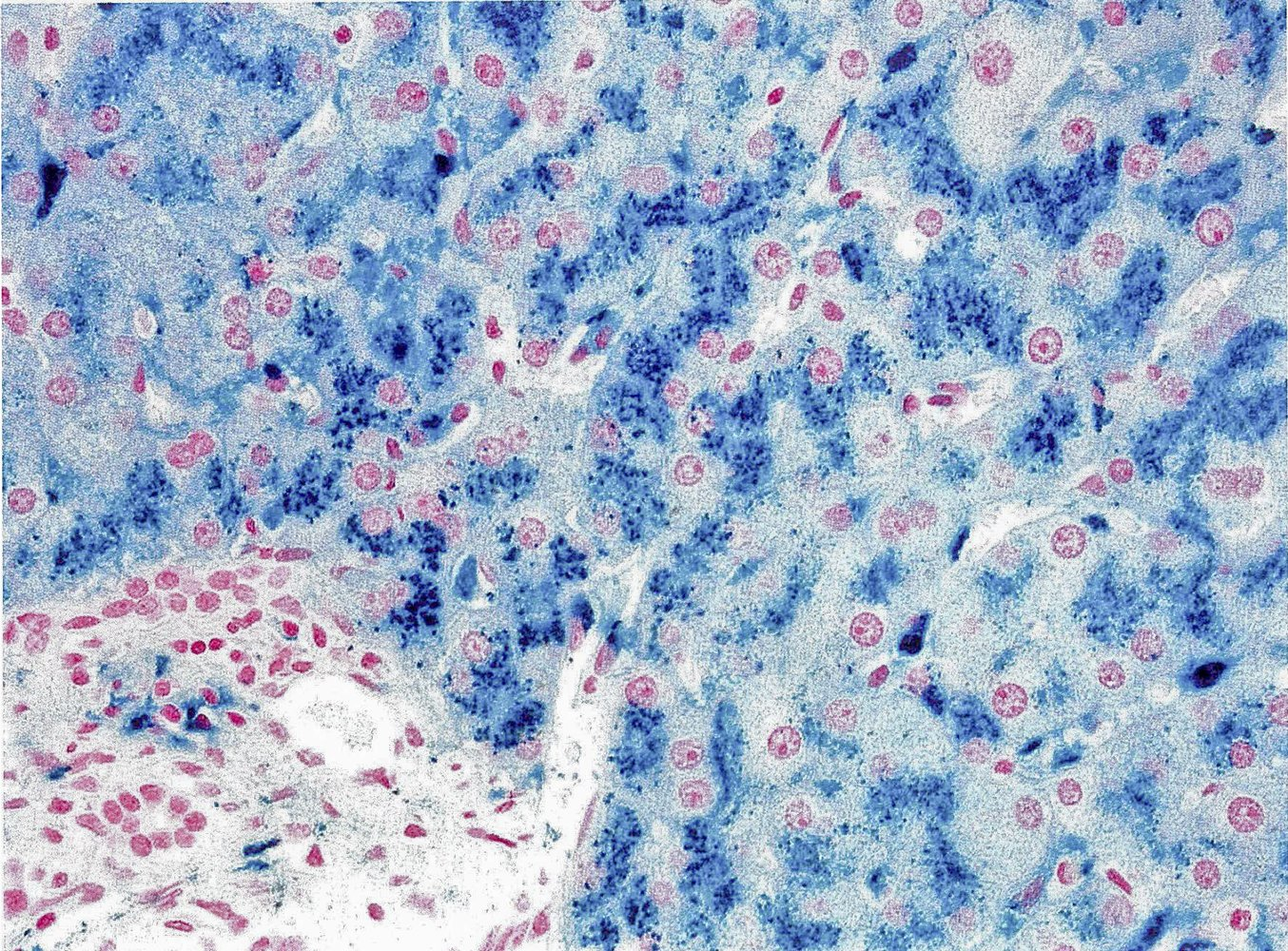Etiology
mutations in SERPINA1 gene
- M is the normal allele.
- S mutation causes a moderate decrease in AAT production.
- Z mutation causes a significant decrease in AAT production.
- The severity of disease depends on the specific genotypic expression, which correlates with the amount of α1-antitrypsin protein synthesis
- PiMM: 100% expression of normal protein and therefore normal serum levels of AAT
- PiMS: 80% of normal serum levels of AAT
- PiSS, PiMZ, PiSZ: 40–60% of normal serum levels of AAT
- PiZZ: 10–15% of normal serum levels of AAT (severe AAT deficiency)
Pathophysiology

- Alpha-1 antitrypsin: a protease inhibitor that is synthesized in the liver and protects cells from breakdown by neutrophil elastase
- Gene mutation induces a conformational change in the structure of AAT protein → dysfunctional (or absent) AAT
- Effect on the liver: accumulation of AAT in hepatocellular endoplasmic reticulum → hepatocyte destruction → hepatitis and liver cirrhosis
- Effect on the lungs: deficient AAT → uninhibited neutrophil elastase activity → destruction of the pulmonary parenchyma → panacinar emphysema
Clinical features
- Pulmonary manifestations
- Cough, wheezing
- Dyspnea
- Diminished breath sounds
- Barrel chest
Tip
Adolescents presenting with pulmonary symptoms without a history of smoking should raise suspicion for AAT deficiency.
- Hepatic manifestations
- Prolonged neonatal jaundice
- Hepatitis
- Cirrhosis
- Increased risk of hepatocellular carcinoma (HCC)
Diagnostics
- Serum: decreased antitrypsin protein levels
- Electrophoresis: decreased alpha-1 peak
- Chest x-ray
- Low and flat diaphragm
- Widened intercostal spaces
- Hyperinflation and increased basilar radiolucency of both lungs with rarification of peripheral pulmonary vessels
- Chest CT
- Panacinar emphysema (in contrast to centriacinar emphysema in smoking-related emphysema)
- Bronchiectasis
- Bullae
- Liver biopsy
- PAS-positive, spherical inclusion bodies in periportal hepatocytes

- Signs of cirrhosis
- PAS-positive, spherical inclusion bodies in periportal hepatocytes
Tip
Hemochromatosis is diagnosed with Prussian blue staining
Tip
Whipple disease also has PAS-positive
